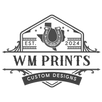3D printing has captured the imagination of many with its promise of exciting innovations and seamless manufacturing. However, as with any technology, it's essential to differentiate between myth and reality to understand its true potential and limitations. In this blog post, we will explore some common misconceptions about 3D printing and provide a grounded perspective on what this technology can and cannot do.
Myth 1: 3D Printers Can Print Any Material
One prevalent myth is that 3D printers can work with any material, from metals to wood, with ease. While advancements have been made in the range of materials available for 3D printing, there are still limitations. The commonly used materials include various plastics, resins, and certain metals, but each requires specific conditions and types of printers.
For instance, standard consumer-grade 3D printers typically use filaments like PLA or ABS plastics, and printing with metal, ceramics, or carbon fiber usually requires specialized industrial machines. This underscores the importance of selecting the right material and printer for your project needs.
Explore our Lyman Type prep tools holder for insights into practical applications of 3D printing in organizing and enhancing your productivity.
Myth 2: 3D Printing is Fast
Another common belief is that 3D printing is a rapid process, allowing for quick prototyping and production. In reality, the speed of 3D printing is highly contingent on factors such as the complexity of the design, the size of the object, and the type of printer used. Larger and more intricate designs take significantly longer to print.
Additionally, the post-processing steps, including cleaning, curing, and assembly, can add to the timeline. Therefore, while 3D printing offers the advantage of customization and reduced tooling costs, expecting rapid production for large-scale manufacturing may lead to disappointment.
Myth 3: 3D Printers Are Affordable for Everyone
While the cost of 3D printers has decreased over the years, it's a myth that they are affordable for everyone. Entry-level printers are accessible for hobbyists and small businesses, yet industrial-grade printers that offer better precision and material compatibility can be quite expensive. Moreover, the ongoing costs of materials, maintenance, and potential repairs should not be overlooked.
When considering 3D printing for your needs, evaluate the total costs involved and weigh them against your project requirements to ensure it’s a fitting investment.
For more insights into the world of 3D printing and its practical applications, visit wmprints.com.
By debunking these myths, we hope to provide a clearer picture of what 3D printing technology entails. While it holds incredible promise, understanding its limitations ensures more realistic expectations and effective utilization of its capabilities.





